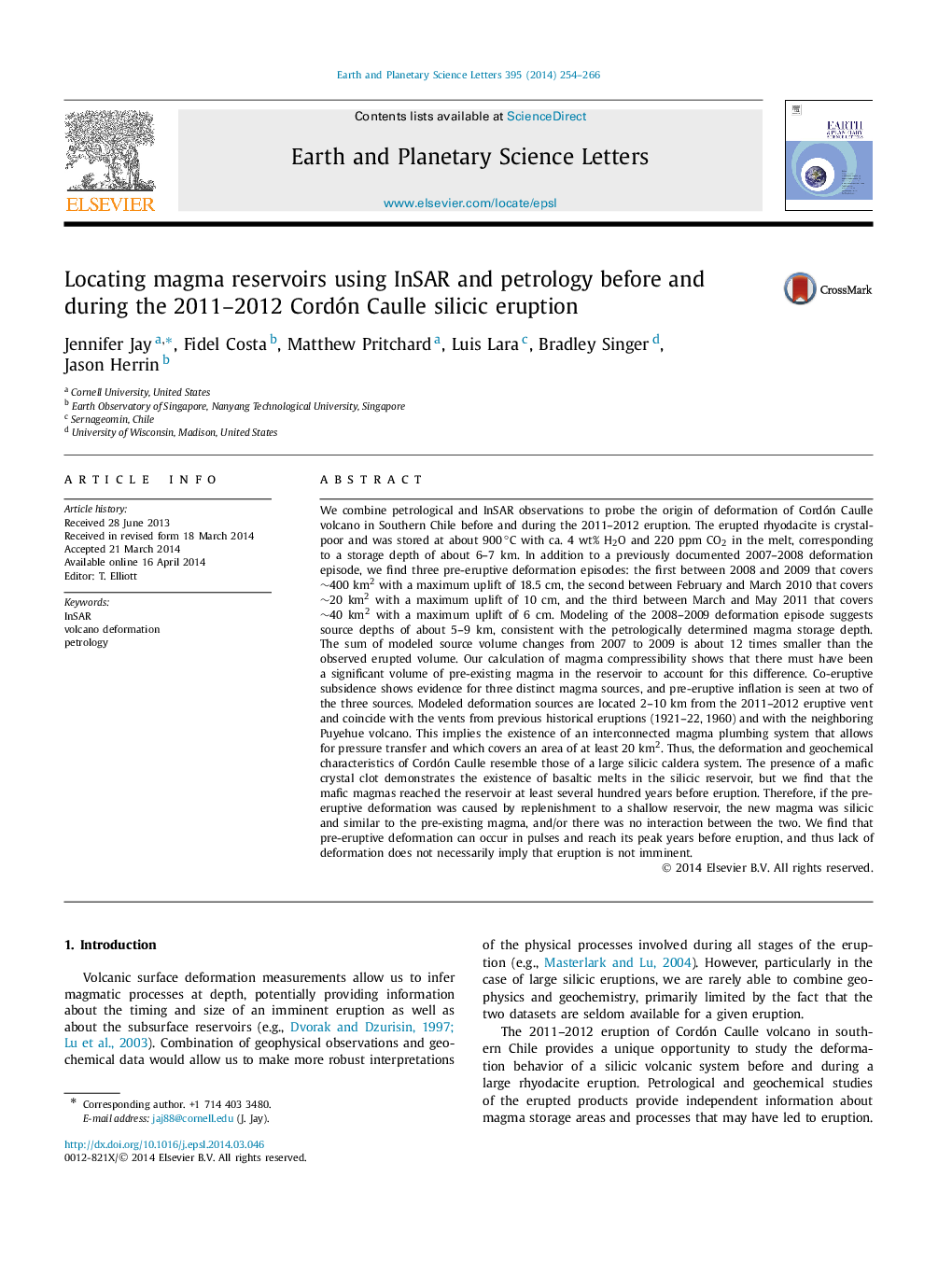| کد مقاله | کد نشریه | سال انتشار | مقاله انگلیسی | نسخه تمام متن |
|---|---|---|---|---|
| 6429299 | 1634761 | 2014 | 13 صفحه PDF | دانلود رایگان |

- Geophysics and geochemistry are combined to study the 2011-2012 Cordon Caulle eruption.
- InSAR shows pre-eruptive uplift (magma intrusion) and co-eruptive subsidence (magma withdrawal).
- Petrology and InSAR results suggest a long-lived shallow silicic magma reservoir.
- The Maule earthquake triggered hydrothermal deformation but no other measurable effects.
- The eruption was likely not triggered by a late magma intrusion.
We combine petrological and InSAR observations to probe the origin of deformation of Cordón Caulle volcano in Southern Chile before and during the 2011-2012 eruption. The erupted rhyodacite is crystal-poor and was stored at about 900â°C with ca. 4 wt% H2O and 220 ppm CO2 in the melt, corresponding to a storage depth of about 6-7 km. In addition to a previously documented 2007-2008 deformation episode, we find three pre-eruptive deformation episodes: the first between 2008 and 2009 that covers â¼400 km2 with a maximum uplift of 18.5 cm, the second between February and March 2010 that covers â¼20 km2 with a maximum uplift of 10 cm, and the third between March and May 2011 that covers â¼40 km2 with a maximum uplift of 6 cm. Modeling of the 2008-2009 deformation episode suggests source depths of about 5-9 km, consistent with the petrologically determined magma storage depth. The sum of modeled source volume changes from 2007 to 2009 is about 12 times smaller than the observed erupted volume. Our calculation of magma compressibility shows that there must have been a significant volume of pre-existing magma in the reservoir to account for this difference. Co-eruptive subsidence shows evidence for three distinct magma sources, and pre-eruptive inflation is seen at two of the three sources. Modeled deformation sources are located 2-10 km from the 2011-2012 eruptive vent and coincide with the vents from previous historical eruptions (1921-22, 1960) and with the neighboring Puyehue volcano. This implies the existence of an interconnected magma plumbing system that allows for pressure transfer and which covers an area of at least 20 km2. Thus, the deformation and geochemical characteristics of Cordón Caulle resemble those of a large silicic caldera system. The presence of a mafic crystal clot demonstrates the existence of basaltic melts in the silicic reservoir, but we find that the mafic magmas reached the reservoir at least several hundred years before eruption. Therefore, if the pre-eruptive deformation was caused by replenishment to a shallow reservoir, the new magma was silicic and similar to the pre-existing magma, and/or there was no interaction between the two. We find that pre-eruptive deformation can occur in pulses and reach its peak years before eruption, and thus lack of deformation does not necessarily imply that eruption is not imminent.
Journal: Earth and Planetary Science Letters - Volume 395, 1 June 2014, Pages 254-266